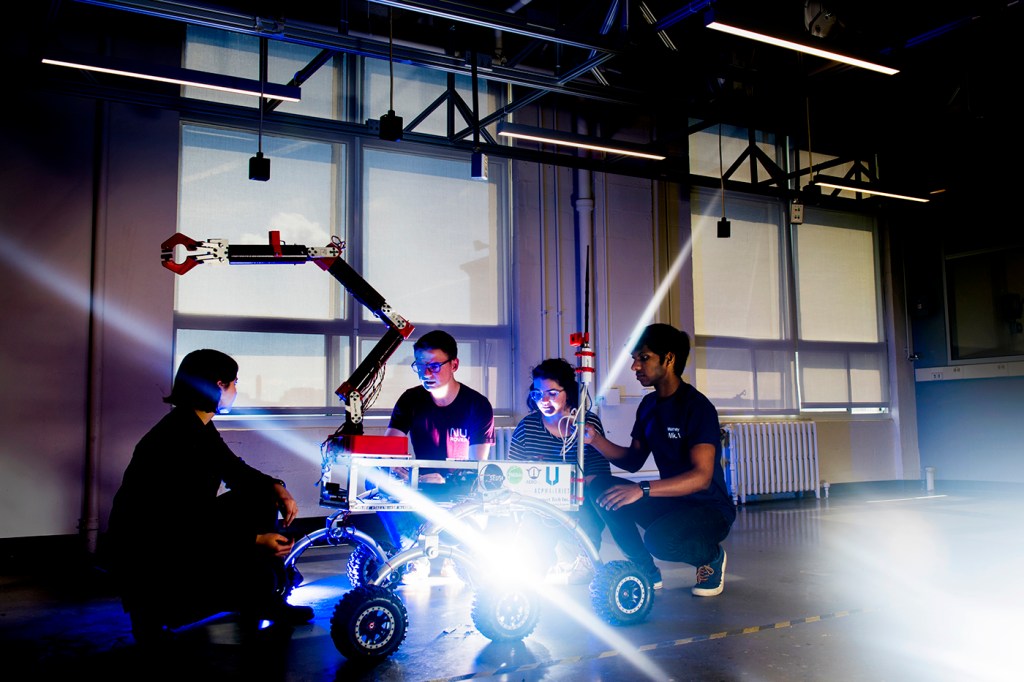Technology designed for astronauts on Mars by Northeastern University students to go on display at Boston Museum of Science

In honor of the 50th anniversary of the Moon landing, Northeastern students will be showing off the technology they’ve designed to help humanity take its next giant leap: putting astronauts on Mars.
In the past few months, Northeastern students have competed in two engineering challenges to design and build equipment to help astronauts on the red planet. One group of students has built a drill to extract water from beneath the planet’s surface. The other group built a rover to accompany and assist astronauts as they work.
Both projects will be on display in the exhibit halls of Boston’s Museum of Science this weekend, as part of a two-day event celebrating the Moon landing and the future of space exploration.
“We’re being invited to the same event as a past Apollo engineer,” says Tom Degen, a fourth-year mechanical engineering student who led the Mars rover team. “It’s just incredible.”
Degen and 15 of his fellow students flew to Utah at the end of May to compete in the Mars Society’s University Rover Challenge. The competition challenged university students to build rovers capable of picking up and delivering objects to astronauts, servicing equipment, navigating autonomously across rough terrain, and searching for life in the samples they collected. It was Northeastern’s first year competing, and no other rookie teams were accepted.
“Probably one of the most challenging things engineering-wise, was building a robotic arm from scratch, with all the limitations as far as how heavy it could be,” Degen says. “It needed to have a pretty far reach and still lift heavy things. That really made it a challenge for our engineers to build, but they did an amazing job with it, and I’m excited for people to see that.”
Members of the rover team will be joined by students who participated in NASA’s Moon to Mars Ice and Prospecting Challenge and their robot, which is designed to drill into Mars and collect water that is frozen under the surface of the planet.
“It’s incredible to think that stuff that we’re working on could help inspire the robots that are one day going to go to Mars and do that,” says Dan McGann, a fourth-year engineering student who was the team leader on the robot project.
Most of the seven-member team also participated in the 2018 competition, which they won handily. This year, the competition was even more challenging, requiring the robot to drill through different soil layers that ranged from a sand-like consistency to aerated concrete. While their design worked as intended, their method of drilling struggled with the concrete layer.
“We’re still proud of it, because it helps NASA and the judges, who are using this as an opportunity to get ideas and learn from people’s mistakes,” McGann says. “It’s taught them something about how to better address this problem.”
McGann and his teammates will be showing off their robot at the Museum of Science on Saturday from 11 a.m. to 3 p.m., alongside the rover, which will be there both Friday and Saturday.
“I haven’t been back to the Museum of Science since I was a little kid,” Degen says. “A big part of what inspired me to become an engineer was seeing all the cool exhibits that were there. I’m hoping we can do that for some other kids.”
For media inquiries, please contact media@northeastern.edu.




